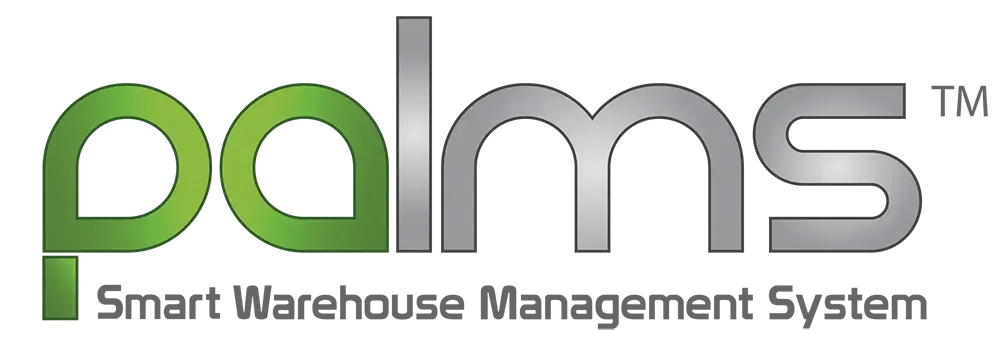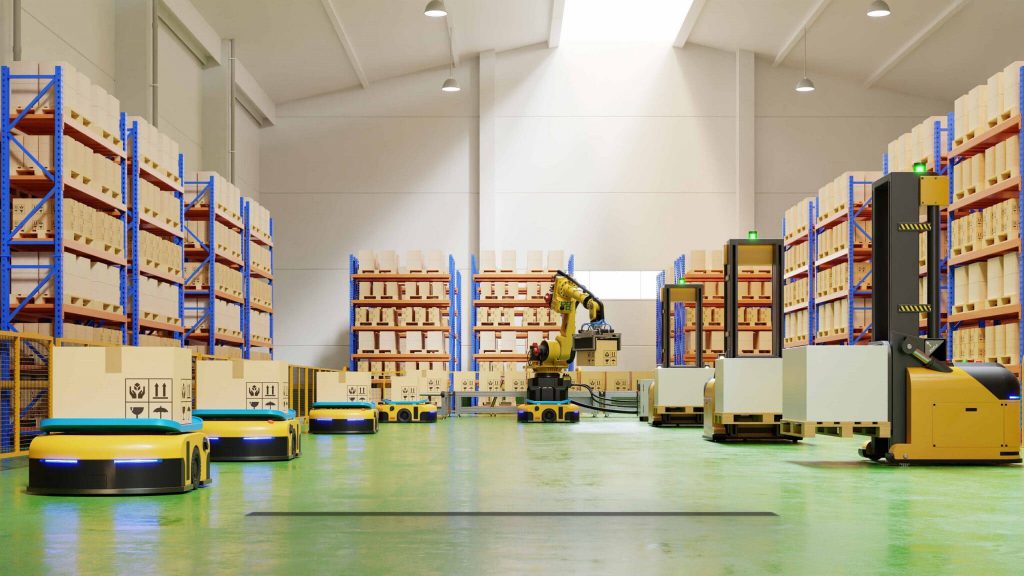In previous blogs, we have explored various aspects of warehouse management, including order-picking methodologies, warehouse operations, and warehousing KPIs. Let us look at some of the most common terminologies you may come across while learning about warehouse management, their meaning, and usage:
- What is TAT?
TAT or Turn Around Time is an important metric in warehouse management and overall supply chain fluency. All material movement activities (loading, unloading, put-away, picking, dispatch, etc.) can be measured and benchmarked using TAT. - What is “Muda” – Hint: Japanese word?
Muda implies waste. In Toyota Production System (TPS), Muda represents activities that do not add any value to the production process. In the context of Inventory Management, identification, and elimination of Muda activities can help in shortening the TAT and improving productivity - What is “Kanban” – Hint: Japanese word?
Kanban literally means “token” or a “Signboard”. It is the underpinning concept on which the Toyota Production System, off which the concept of just-in-time inventory management was created, operates. While in itself, Kanban is not an inventory optimization strategy, it can help in bringing down the Stores inventory in case the demand for the inventory can be anticipated. - What is “ABC Analysis of Inventory”?
Inventory Analysis using ABC classification can be done based on one or multiple parameters. From operations perspective, the major dimensions measured for ABC Analysis of Inventory are: Frequency of Movement, Quantity of Movement and Closing Stock (Quantity). - What is “Inventory Visibility”?
Inventory Visibility refers to the ability of the stakeholders to identify the status of inventory in real-time. In large Supply Chains, Inventory can be distributed across geographies (countries, warehouses, shelves, etc.), Cost Heads (RM, WIP, FG), stakeholders (vendors, receiving bay, store, dispatch bay, transit, 3PL service provider, etc.). Keeping accurate track of inventory reduces cost and improves productivity. - What is “SOBO”?
SOBO or “Sell One Buy One” is a Toyota Production System concept that leverages Kanban. In a typical SOBO scenario, the Raw Material for the next production batch is replenished only when the previous batch is consumed. Replenishment is based on a Kanban signal and the RM batch size is standardized. - What is “Auto-ID”?
Auto-Id or Automatic Identification and Data Capture (AIDC) describes various methods used to identify and capture details of items relevant in Supply Chain (like Part, Location, etc.). Barcodes, QR Codes, RFID, etc. are common forms of AIDC used in India. - What is “MHE”?
MHE or Material Handling Equipment refers to the many Inventory Movement equipment used in plants, stores and warehouses for moving inventory in a safe and efficient way. Most MHEs are designed to handle palletized load. Commonly used MHEs include Hand Pallet Truck, Fork Lift, Order Picker, etc. - What is “HHT”?
Hand-Held Terminals (HHT) are portable computers that can run specialized software. In the context of a Store/Plant, HHTs can be used to read Barcodes, QR Codes and RFID tags. This helps in speeding up part/location identification and data entry. Industrial HHTs are rugged and are resistant to accidental drops. - What is “Carousel”?
Carousel is a type of storage that is designed to optimize space in a Store. A vertical Carousel is a set of rotatable shelves that can be moved on the vertical axis. Carousels are ideal for storing small to medium size parts like fasteners, bolts and nuts. - What is “Pareto Analysis”?
Pareto Analysis is used in inventory management to the identify the top x percentage parts that contribute to the maximum number of transactions. It is a good means to identify those parts that are significant enough to be focused on for performance improvement. - What is “DAD/DAC”?
DAD/DAC also known as Daily Average Demand/Consumption is the average customer demand fulfilled by the FG store and the average raw material consumed by the shop floor. While the individual data points (daily data) may fluctuate based on various parameters, the average data can be used as a pointer to estimate a suitable closing stock (RM and FG) at the store. - What is “Picking Sequence”?
Picking Sequence is the ideal path to be followed in the store for a particular Pick List. Following the Picking Sequence (usually suggested by a WMS) will help reduce unwanted movements (Muda), improve productivity and reduce congestion within the store. - What is “AS/RS”?
AS/RS or Automated Storage and Retrieval Systems are PLC-controlled Material Handling Equipment designed to move material in a warehouse/store based on triggers received from a linked Warehouse Control System (WCS). AS/RS systems are used in warehouses that have a very high transaction volume and very less available space. - What is “Part Labelling”?
Part Labelling using AIDC technologies like Barcode or QR Code helps in identification and counting of parts quickly and accurately. Manual labelling of a part in human-readable text is more prone to errors compared to Auto-ID technology. - What is “Location Labelling”?
Location Numbering and Labelling helps in identification of individual locations in a store using an uniform terminology. Combined with a Location Management System, it helps in precisely identifying the location of the parts in a store. - What is “Tote Picking”?
Tote Picking involves picking multiple small parts in sequence. This helps to eliminate sub-optimal worker movement within the store. - What are “Gravity Chutes”?
Gravity Chutes are slides used for easy movement of parts within a multi-storey warehouse. Parts picked at higher levels (like from a mezzanine floor) can be moved to the dispatch bay through these chutes quickly and safely. - What is “Zone Picking”?
Zone Picking involves creating a pick list that routes the picker through the various zones within a store. The picker completes the picking task in each zone and moves to the next zone. This helps in reducing any zig-zag movement in a store. - What is “Wave Picking”?
In wave picking, multiple pickers can simultaneously perform picking across multiple zones and the materials are aggregated in the dispatch bay before shipment. Wave Picking can help improve TAT in cases where there are multiple orders to be fulfilled in a relatively short time period. - What is “Stock Taking/Counting”?
Stock Taking/Counting is a continuous method of stock reconciliation that can be done periodically such that a portion of the store gets audited every few days. With the advent of WMS systems, Stock Taking/Counting Results can be tracked easily across multiple counts to identify high-risk parts that need extra care. - What is “RFID Tracking”?
RFID Tracking of inventory is an AIDC method to track inventory and capture relevant data automatically using active/passive RFID tags and RFID readers. Used in combination with other technologies, like GPS, RFID can be helpful in tracking inventory spread across multiple locations. - What is “Application Interfaces”?
Application Interfaces are connectors between two or more IT systems that facilitate electronic data transfer of information between these systems. Application Interfaces help in seamless flow of data across multiple systems and eliminate the need for duplicate data entry. - What are “Binning Rules”?
Binning Rules are pre-set business rules configured in WMS to optimize the location utilization and worker productivity in a store. This helps in reducing manual intervention and judgement while selecting the ideal storage location while receiving a part. - What are “Picking Rules”?
Picking Rules are pre-set business rules configured in WMS to ensure picking is done as per FIFO. Multiple business rules can be combined (e.g. FEFO + FIFO) to improve inventory health. Picking Rules can also be defined to identify the optimal picking sequence and minimize Muda. - What is “Location Restriction”?
Location Restriction is a type of Binning Rule enforced in WMS applications to ensure that a part is stored in only certain areas of a store. For example, WMS can be configured to bin steel rods/plates in specific outdoor yards from where material issue could occur. - What is “Instruction-Confirmation Method of Material Movement”?
Instruction-Confirmation Method of Material Movement helps in keeping the physical stock in sync with the WMS/ERP stock and minimizes discrepancies. In this method of warehouse management, the Store Supervisor issues an instruction (e.g. Pick List) to the workers in the store to move Z units of a part from Location X to Location Y. On completion of the movement, the workers confirm to the supervisor that the movement is complete/not carried out (E.g. Pick Confirmation). This information gets updated in the WMS/ERP. - What is “Cube-utilization of Storage Space”?
Cube-utilization of Storage Space is the total volume occupied by the parts in a bin. Utilization in warehouse management can be improved by matching the right part to the right bin type and by storing multiple parts together. - What is a “KPI Dashboard”?
KPI Dashboards are simple visualizations of complex data that help users in making informed decisions in warehouse management. KPI Dashboard can be configured based on the data accumulated in transactional applications like WMS.






